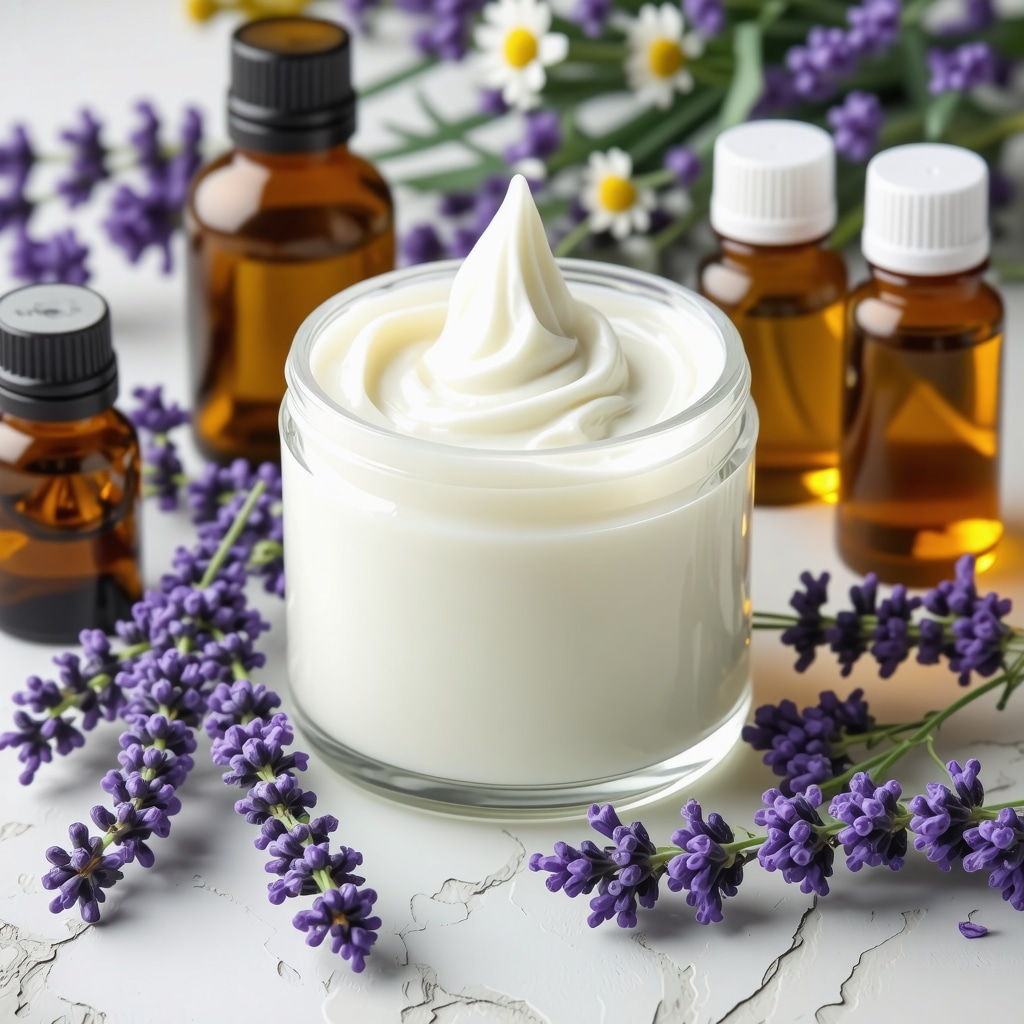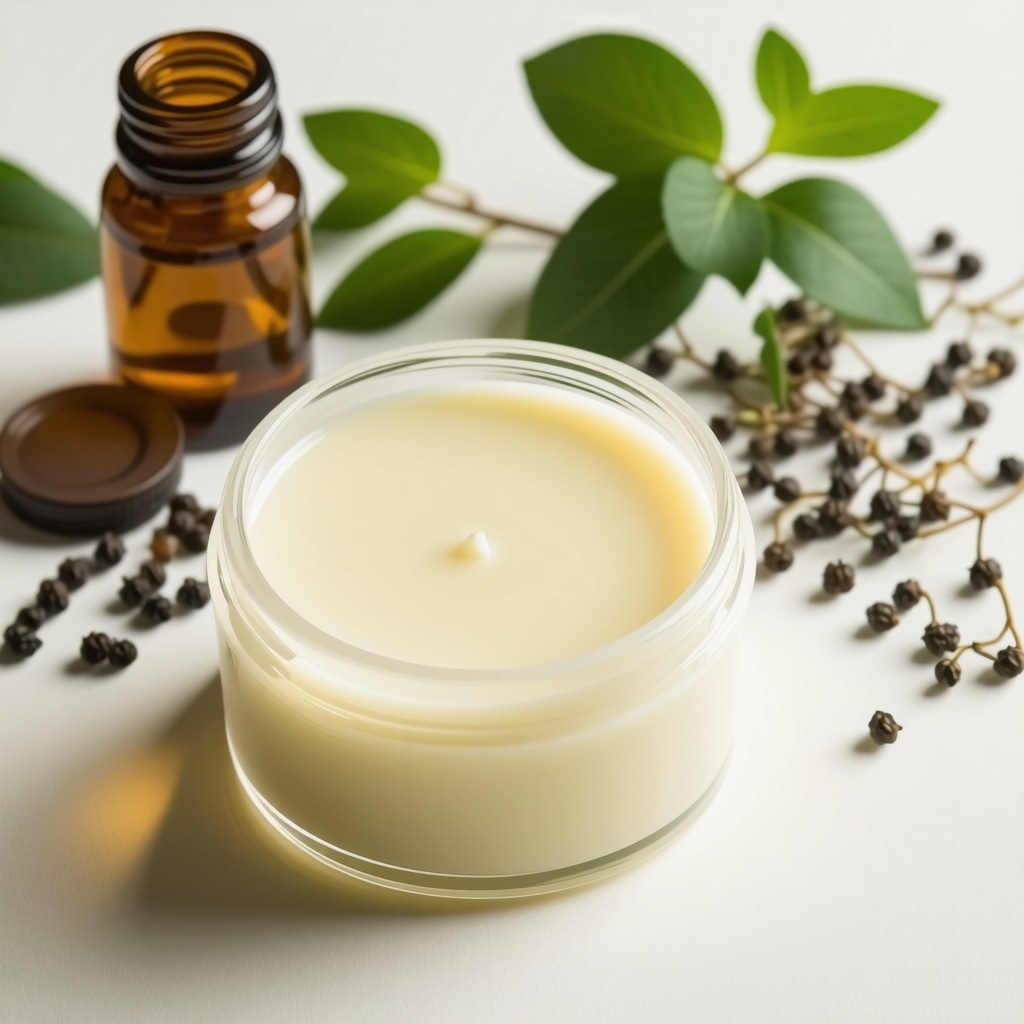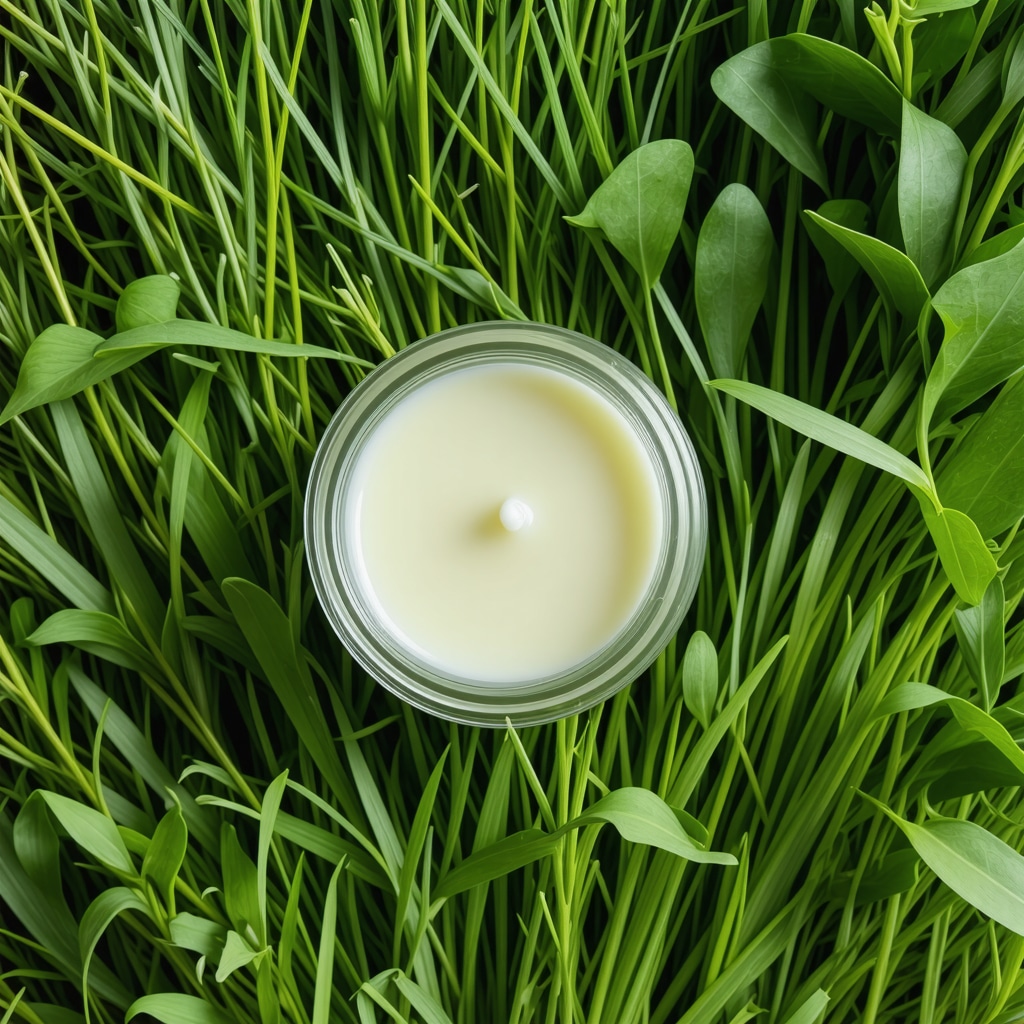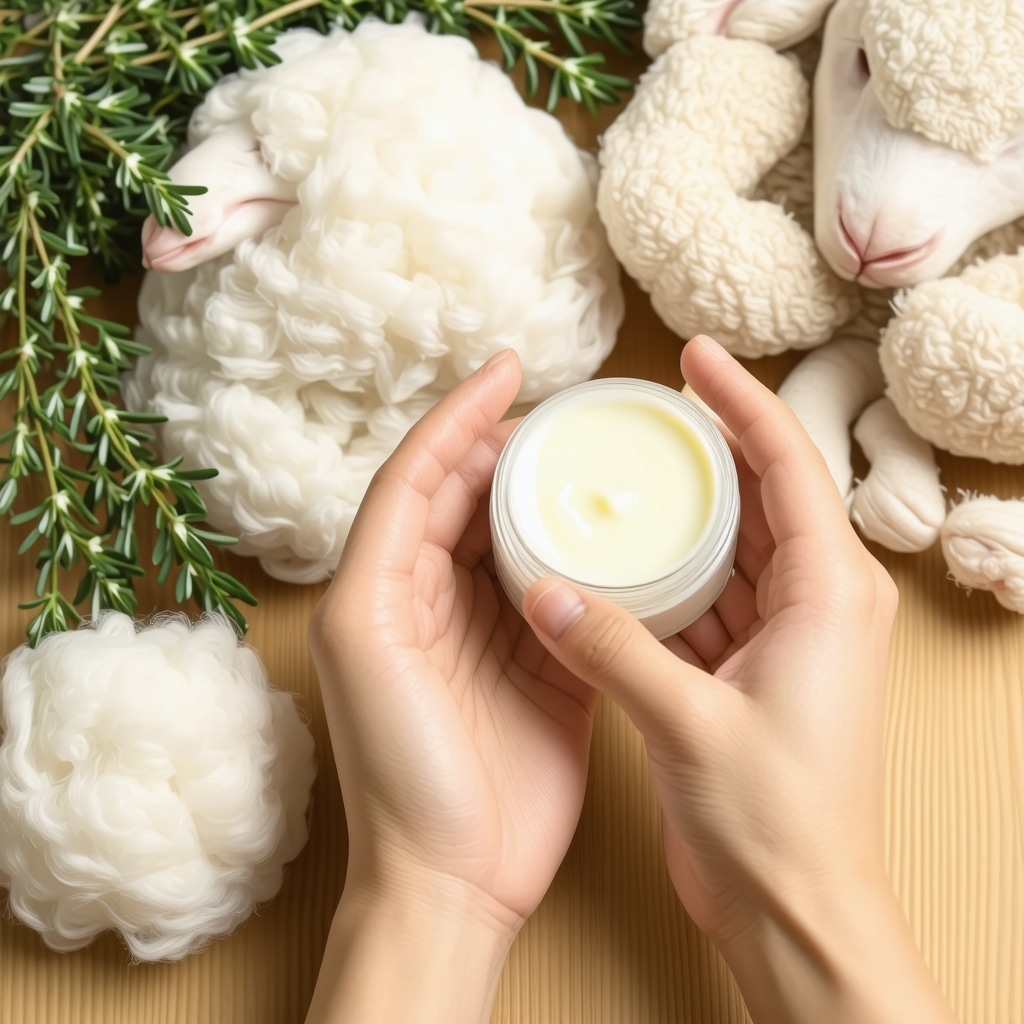My Journey to Finding Relief: The Unexpected Power of Tallow Balm
Living with eczema has been a rollercoaster of itchy, inflamed skin and countless product trials that left me frustrated and hopeless. I vividly remember the moment I discovered tallow balm—a natural solution that surprisingly soothed my sensitive skin better than anything else I’d tried. Unlike typical creams loaded with synthetic ingredients, this balm felt nourishing and gentle, almost like my skin was drinking in nourishment from a simpler, purer source.
Why Tallow Balm Feels Different on Eczema-Prone Skin
What truly sets tallow balm apart for eczema sufferers is its remarkable similarity to our skin’s natural oils. Derived from grass-fed beef fat, tallow contains essential fatty acids like oleic acid and palmitic acid, which help repair and reinforce the skin barrier. This is crucial when managing eczema, where the skin’s barrier is often compromised, leading to dryness and irritation. I found that regular application significantly reduced flare-ups and deeply hydrated my skin without clogging pores or causing further irritation.
Is Tallow Balm Safe and Effective for Sensitive Skin Like Eczema?
Many who struggle with eczema worry about reactions, but tallow balm has a long history of being gentle and compatible with sensitive skin. In fact, according to this study from the National Institutes of Health, natural fats like tallow can support skin barrier repair and reduce inflammation. I always recommend choosing high-quality, organic, grass-fed tallow balms to avoid additives that might trigger sensitivities. For those interested, I’ve also explored safe usage tips and considerations here.
How I Incorporated Tallow Balm Into My Daily Routine for Lasting Comfort
At first, I applied tallow balm sparingly to affected areas, especially after showering when my skin was still damp to lock in moisture. Over time, I noticed not just temporary relief but improved skin resilience and fewer eczema outbreaks. The balm’s rich texture felt luxurious yet absorbed well — a balance I hadn’t found with other moisturizers. If you’re curious about crafting your own, there’s a simple DIY guide to make your own tallow moisturizer with essential oils for extra hydration.
Why I Believe Tallow Balm Deserves a Spot in Your Skincare Arsenal
Discovering tallow balm was a game-changer in my eczema management journey. Its natural, nutrient-rich profile supports healing in ways synthetic products often can’t match. If you’re battling eczema or sensitive skin, I encourage you to consider this traditional remedy—just as I did—and observe how your skin responds. I’d love to hear about your experiences or questions, so please feel free to reach out or comment below. Sharing stories strengthens our community and helps us all find better, gentler solutions.
Delving Deeper: The Science Behind Tallow’s Skin Barrier Support
While the basic benefits of tallow balm are widely appreciated, understanding the biochemical mechanisms at play offers a richer perspective on why it excels for eczema-prone skin. Grass-fed tallow is rich in conjugated linoleic acid (CLA) and vitamins A, D, and K2, which are well-known for their anti-inflammatory and skin-repairing properties. These compounds actively promote cell regeneration and strengthen the lipid matrix of the skin barrier. This results in improved resilience against environmental stressors and a reduction in transepidermal water loss (TEWL), a key factor in eczema flare-ups.
Can Grass-Fed Tallow Balm Replace Conventional Treatments for Chronic Eczema?
From an expert standpoint, the question many face is whether natural tallow balm can serve as a standalone therapy or if it should complement existing dermatological treatments. Research suggests that while tallow balm is exceptional for barrier repair and soothing inflammation, it may not fully replace prescribed corticosteroids or immunomodulators for severe eczema cases. However, its role as a supportive, daily moisturizer that reduces dependency on harsh chemicals is invaluable. This dual approach aligns with findings from the National Institutes of Health study on natural fats and skin repair, highlighting the importance of integrative care.
Practical Tips for Maximizing Tallow Balm’s Benefits in Your Skincare Routine
To harness the full potential of grass-fed tallow balm, consider layering it strategically after cleansing and applying lightweight serums rich in antioxidants. This method ensures that the balm not only locks in moisture but also creates a nutrient-rich environment for skin healing. For those with sensitive or compromised skin, it’s wise to perform patch tests before full-face application to monitor tolerance. Additionally, pairing tallow balm with gentle cleansers and avoiding irritants enhances its efficacy. For detailed routines tailored to eczema, check out this expert guide on night skincare with tallow.
Moreover, sourcing matters greatly. Opting for organic, grass-fed tallow ensures higher nutrient density and fewer contaminants compared to grain-fed alternatives, which can affect skin outcomes. Dive deeper into this comparison in our post on grass-fed versus grain-fed tallow.

Unlocking the Full Potential: Which Essential Oils Complement Whipped Tallow Cream Safely?
Enhancing tallow balm with essential oils can elevate its therapeutic effects, especially for eczema relief. However, selecting oils with anti-inflammatory and calming properties is crucial to avoid irritation. Lavender, chamomile, and frankincense are among the top choices, known for their skin-soothing benefits. When crafting your own whipped tallow cream, precise dilution is key — typically a 1% essential oil concentration ensures safety and efficacy. For an in-depth breakdown of essential oils that harmonize well with tallow, see this comprehensive resource.
Integrating these botanical allies not only enhances hydration but also supports the skin’s immune response, offering a multi-faceted defense against eczema triggers. This synergy exemplifies how traditional ingredients and modern aromatherapy can jointly foster skin wellness.
If you’ve experimented with tallow balm and essential oils or have questions about creating your own formulations, I invite you to share your insights and experiences. Engaging in thoughtful dialogue helps all of us refine our approaches to sensitive skin care.
The Nuances of Choosing the Right Tallow Balm: A Personal Reflection
Not all tallow balms are created equal, and my experience taught me that the source and processing matter immensely, especially for eczema-prone skin. Early on, I made the mistake of trying generic tallow products that lacked transparency about their origin. It wasn’t until I switched to a balm made from organic, grass-fed beef tallow that I truly noticed a difference. The richer nutrient profile and absence of synthetic preservatives made my skin feel genuinely nourished rather than just temporarily soothed.
Can Tallow Balm Adapt to Seasonal Skin Changes, Especially in Eczema?
One question I’ve often pondered and encountered from others is how adaptable tallow balm is when skin conditions fluctuate with seasons. Eczema can be unpredictable — sometimes dry and flaky in winter, other times more inflamed in humid summer months. From my observations and supported by clinical insights like those discussed in this NIH study, tallow’s fatty acid composition helps stabilize the skin barrier across varying conditions. In drier months, it locks in moisture effectively, while in warmer seasons, it supports barrier repair without overwhelming the skin, especially when applied in moderate amounts or combined with lighter serums. This flexibility is why I recommend layering techniques I detailed in my night routine guide, which can be tailored seasonally for maximum benefit.
It’s fascinating how a single ingredient, long regarded as simple, can play such a dynamic role in managing complex skin issues. This nuanced adaptability is part of why tallow balm remains my go-to, even when my eczema symptoms evolve.
Integrating Tallow Balm Mindfully: Lessons from My Journey
Incorporating tallow balm into my skincare routine was not just about slathering it on and hoping for the best. It required attentive listening to my skin’s signals and adjusting usage accordingly. For instance, during intense flare-ups, I found that using tallow balm alongside gentle cleansing and avoiding irritants was crucial — a strategy echoed by many who have successfully managed eczema holistically.
Moreover, I learned the importance of sourcing knowledge from trustworthy resources to avoid misinformation. I highly recommend exploring well-researched DIY recipes like the DIY tallow cream with essential oils for those interested in crafting personalized formulations that cater to unique skin needs.
What Are the Ethical and Environmental Considerations When Choosing Tallow Products?
Beyond skin health, I’ve reflected deeply on the broader implications of my skincare choices. The ethics of sourcing animal-based products like tallow cannot be ignored. Choosing tallow derived from grass-fed, pasture-raised cattle aligns better with sustainable and humane farming practices. This not only ensures higher quality balm but also supports environmentally responsible agriculture. For readers interested in the intersection of clean beauty and ethics, I suggest checking out insights on ethical organic tallow cream brands.
Understanding this connection has made my skincare ritual feel more intentional and meaningful, transforming daily application into an act of mindfulness and respect for the planet.
Throughout this ongoing journey with eczema and tallow balm, I invite you to share your own experiences or questions. Engaging in open dialogue not only enriches our collective understanding but also fosters community support. Feel free to reach out or comment — your story might just inspire someone else navigating similar skin challenges.

Exploring the Future: How Tallow Balm Fits into Evolving Skincare Paradigms
Looking ahead, I’m intrigued by how traditional ingredients like tallow balm are being rediscovered and reimagined in modern clean beauty. The blend of time-honored wisdom with contemporary scientific validation offers a promising path for eczema care that respects skin biology while minimizing reliance on harsh chemicals. This aligns with trends I’ve explored in posts like why tallow is trending in clean beauty.
As research progresses, I anticipate more nuanced formulations and personalized approaches that leverage tallow’s unique lipid profile, potentially combined with emerging botanical extracts and advanced delivery systems. This evolution excites me because it promises tailored solutions for sensitive skin sufferers who have long sought gentle yet effective remedies.
For those curious about crafting such personalized care, experimenting thoughtfully with recipes like the minimalist DIY tallow moisturizer can be a rewarding step toward deeper skin connection and empowerment.
Refining My Approach: The Intersection of Biochemistry and Personal Experience with Tallow Balm
As I continued my journey with tallow balm, I realized that its effectiveness extends beyond a simple moisturizing ritual; it taps into the complex biochemistry of skin repair. The unique lipid profile of grass-fed tallow, rich in saturated and monounsaturated fats alongside fat-soluble vitamins, supports not only hydration but also modulates inflammatory pathways intrinsic to eczema. This nuanced understanding empowered me to tailor applications based on skin condition fluctuations, reinforcing the importance of an adaptive skincare regimen rather than a static routine.
How Does Tallow Balm Influence the Skin Microbiome in Eczema Management?
One advanced question I often explore is tallow balm’s impact on the skin microbiome, a critical factor in eczema pathophysiology. Emerging research highlights that maintaining a balanced microbial environment on the skin surface can reduce flare-ups and promote barrier integrity. The fatty acids in tallow, particularly conjugated linoleic acid (CLA), exhibit antimicrobial and anti-inflammatory properties that may help regulate pathogenic bacteria without disrupting beneficial flora. According to a detailed review published in the Journal of Dermatological Science, natural lipid-based treatments can positively modulate microbiome composition, offering a promising adjunctive strategy for eczema sufferers.
Integrating tallow balm mindfully alongside gentle, microbiome-friendly cleansers enhances this symbiotic effect, fostering an environment conducive to skin healing and resilience. This insight transformed how I approached my nightly routine, layering lightweight serums before sealing moisture with tallow to optimize both barrier repair and microbial balance. For those interested in crafting personalized formulations, I highly recommend exploring my detailed DIY tallow cream recipe with essential oils that supports microbiome health without irritation.
Balancing Tradition and Innovation: Ethical Sourcing Meets Modern Skincare Demands
Reflecting deeper on my ethical considerations, I discovered that choosing tallow balm isn’t solely a matter of skin benefits but also one of environmental stewardship and animal welfare. Selecting products from organic, pasture-raised cattle ensures that the balm is not only nutrient-dense but also produced under humane, sustainable farming practices. This alignment with ethical sourcing resonates profoundly with my values, transforming my skincare routine into a conscientious ritual that honors both my body and the planet.
Furthermore, the resurgence of animal-based skincare ingredients like tallow within the clean beauty movement exemplifies a harmonious blend of time-tested wisdom and contemporary consumer ethics. This trend is meticulously analyzed in my post on why tallow is trending in clean beauty, providing a comprehensive overview of how such ingredients meet the demands of modern, eco-conscious skincare enthusiasts.
Mastering the Art of Personalized Skincare: Listening to Your Skin’s Unique Language
One of the most profound lessons from my experience is the importance of tuning into my skin’s evolving needs. Eczema is inherently variable, influenced by stress, environment, and internal health. Tallow balm serves as a versatile base, but its application must be responsive—sometimes lighter during humid periods, more generous during dry spells. This dynamic approach, informed by both personal observation and scientific insights, has been key to sustaining skin health long term.
For readers keen on embracing this philosophy, I encourage embracing experimentation within safe parameters. Patch testing, gradual introduction, and consistent journaling help decipher what your skin truly desires. Engaging with communities and expert resources, such as the contact page where I share ongoing insights, can also provide valuable support and inspiration.

Things I Wish I Knew Earlier (or You Might Find Surprising)
Not All Tallow Balms Are Created Equal
Early in my eczema journey, I didn’t realize how much the source and quality of tallow balm influence results. Generic products sometimes left me skeptical, but switching to an organic, grass-fed beef tallow balm made a world of difference. The nutrient profile felt richer, and my skin responded with less irritation and more lasting hydration.
The Subtle Power of Layering
I used to think applying tallow balm alone was enough, but combining it with lightweight serums or oils enhanced its benefits tremendously. This layering method not only locks in moisture but creates a nurturing environment that supports skin barrier repair. My night routine, inspired by expert guides, became a game-changer for managing flare-ups.
Essential Oils Can Elevate or Aggravate
Adding essential oils to whipped tallow cream sounded appealing, but some oils can irritate sensitive skin. I learned to use gentle options like lavender and chamomile at safe dilutions, following advice from trusted resources. This cautious approach helped me enjoy enhanced soothing effects without surprises.
The Skin Microbiome Connection is Real
One surprising insight is how tallow balm may positively influence the skin microbiome, which plays a critical role in eczema. Its antimicrobial fatty acids help regulate harmful bacteria while supporting beneficial flora, contributing to fewer flare-ups. Integrating microbiome-friendly cleansers alongside tallow maximized this effect for me, a nuance I wish I’d appreciated sooner.
Skincare Is a Dynamic Dialogue
Perhaps the biggest lesson is that eczema care isn’t static. I learned to listen closely to my skin’s changing needs—adjusting balm thickness, frequency, and complementary products seasonally. This adaptive mindset, blending personal observation with science, has been key to my ongoing skin health.
Resources I’ve Come to Trust Over Time
National Institutes of Health (NIH): Their studies on natural fats and skin barrier repair (like this one) provided invaluable scientific backing that helped me trust tallow balm’s potential.
Journal of Dermatological Science: Articles exploring lipid-based treatments and microbiome health gave me a deeper understanding of how tallow interacts with skin biology, guiding my routine choices.
Best Organic Tallow Cream Resources: Sites like bestoragnictallowcream.xyz offer comprehensive, research-backed advice and DIY recipes that helped me personalize my skincare approach with confidence.
Clean Beauty Ethical Brand Guides: Learning about ethical sourcing at clean beauty alerts aligned my skincare choices with my values, making my routine feel more meaningful.
Parting Thoughts from My Perspective
Embracing tallow balm in my eczema care was more than just a switch in moisturizer—it became a journey of understanding my skin’s unique language and needs. The natural, nutrient-rich profile of grass-fed tallow supports skin barrier repair and hydration in ways I hadn’t experienced with conventional products. Its adaptability across seasons and compatibility with mindful layering techniques have made it a cornerstone of my routine.
If you’re navigating the challenges of eczema or sensitive skin, I encourage you to explore tallow balm thoughtfully—considering quality, your skin’s feedback, and complementary skincare habits. This approach transformed my experience, and I hope it can help you too.
If this resonated with you, I’d love to hear your thoughts or experiences. Feel free to reach out or share in the comments. Our shared stories build a supportive community where gentle, effective skin care thrives.


I can really relate to the struggles described here with eczema and how traditional products often fall short or even worsen the problem. What struck me most about this post is the emphasis on how tallow balm mimics the skin’s natural oils, which makes a lot of sense biologically. I’ve personally experimented with various natural remedies, and the idea of using grass-fed tallow because of its composition of fatty acids like oleic and palmitic acid resonates with me — it feels like a more holistic way to repair and protect the skin barrier instead of just shielding it temporarily.
What also stands out is the caution about sourcing and additives. This can be a challenge since not all natural products are created equally, and impurities or synthetic fillers could irritate sensitive skin. I appreciated the suggestion to patch test and combine layering techniques with serums for maximizing benefits.
I’m curious if others have experience adjusting their use of tallow balm through different seasons or flare-up intensities? How do you balance the thickness of the balm with your skin’s needs during humid versus dry periods? It seems like listening closely to your skin, as the author suggests, could be key, but I’d love to hear practical tips or routines from fellow readers who have found success with this approach.
Megan, I resonate deeply with your thoughtful question about adjusting the use of tallow balm through varying seasons and eczema flare-ups. From my experience, the key lies in being highly attuned to your skin’s changing signals rather than sticking to a rigid routine. During dry winter months, I tend to apply a slightly thicker layer of tallow balm, especially after dampening my skin post-shower, which helps lock in moisture and protect against the harsh environment. Conversely, in humid seasons, I thin out the amount and often combine the balm with a lightweight antioxidant serum before application to prevent any feeling of heaviness or clogging.
The post’s point about tallow’s fatty acid composition supporting the skin barrier in diverse conditions aligns with what I’ve observed—its flexibility allows for these subtle adjustments without losing effectiveness. I also echo the advice on patch testing when introducing essential oils since even gentle ones like lavender can occasionally be sensitizing depending on skin state.
I wonder, for others managing eczema with tallow balm, how do you navigate sudden flare-ups that don’t necessarily align with seasonal changes? Do you shift your regimen significantly, or do you maintain a consistent base routine? Sharing adaptive tactics like these could be invaluable for this community.
I truly appreciate the depth of this discussion on using grass-fed tallow for eczema. My own experience with sensitive skin has shown me that consistency and patience are key. For example, I started applying a small amount of high-quality, organic grass-fed tallow daily, especially after showers, and noticed my skin becoming more resilient over time. What’s fascinating is how such a traditional ingredient can support the skin’s microbiome—I’ve observed fewer flare-ups when I keep a balanced routine that also emphasizes gentle cleansing and avoiding irritants. Has anyone else noticed changes in their skin microbiome or overall skin health after incorporating tallow? And do you find that adjusting the amount or frequency based on environmental factors like humidity or temperature makes a noticeable difference? I believe that listening to your skin and adapting routines is essential for managing eczema effectively, and sharing these small tweaks could really empower others in this community.